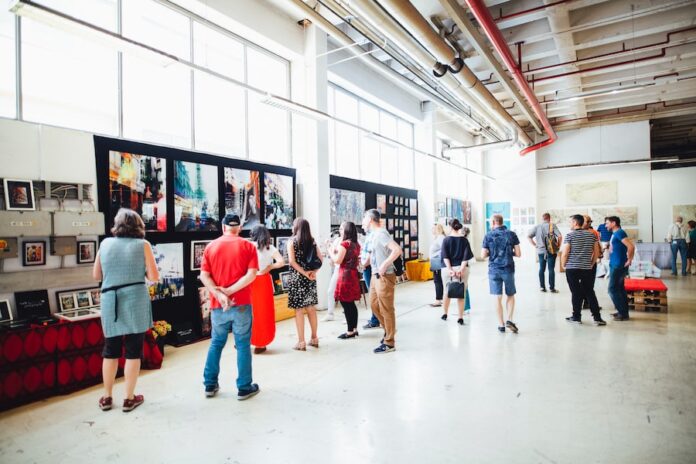
An art fair is a type of event where artists present their pieces to passers-by who may be interested in purchasing a piece of artwork. Many types of art are displayed, covering many genres. Art fairs are held in many cities; however, larger ones, often in big cities, usually attract major/international collectors. Exhibitors have to apply for a spot at these fairs in order to ensure that a wide variety of items are being sold. There are a variety of exhibitions that include specific styles and genres of art too. Some include photography, sculpture, paper art, paintings, or drawings.
Does it cost money to participate in an art fair?
There are some cost factors to be aware of when it comes to participating in art fairs. You want to evaluate past sales or predict how well/how many units you believe you can sell to make sure your predicted sales outweigh the fees associated with entering. The first type of fee you want to be cognizant of are application fees. These are the most straightforward fees when it comes to entering into a fair. Usually between $25-$100, depending on the size of the event. The next fee is the gallery or booth fee. Prices range widely depending on the size of the space you are renting. Check the dimensions offered and use your best judgment to gauge the size of the space you will need. There are other miscellaneous costs you should factor into your decision, such as travel and room costs, as well as possibly having to pay commission to the air fair board.
What is a digital art fair?
A digital art fair is a virtual exhibition of digital art pieces for sale. Often these types of NFT digital art are interactive and can be viewed from all angles, much like a physical museum. You can view hundreds of sculptures, digital drawings, paintings, and other mediums right from your device. Some exhibits may have a theme or prompt that all the artworks within it follow.

Source: www.timeout.com/hong-kong/art/digital-art-fair-asia-2021
Does it cost money to enter a digital art fair?
For most NFT art marketplaces and digital fairs, there is an entry fee. It is comparable to prices associated with physical art. The advantage of displaying your art online is that you avoid travel, hotel, and gallery space fees, making it a more economically safe decision. Depending on the fair, you may still have to pay a commission on your sold pieces. A benefit of minting and turning your physical or digital art into an NFT is that you can make a profit off of prints and views on your piece.
Tips for both digital and physical art fairs
Know your audience. Be direct about who and where you want your target audience to be, and apply to fairs that either relate to them or are close to their geographic location for best results.
Be unique in your art and marketing strategy in order to stand out to consumers. Make them stop and take a second look.
Network. Network. Network. You never know who you’re talking to or what connections you may make. Speak to as many collectors and artists as you can and make contacts.
Even if only two people stopped at your booth or viewed your piece online, exposure is exposure, and you never know who may see your piece and fall in love. Do not be discouraged if you don’t sell a piece right away; selling art times time, commitment, and patience.

